 Mythical: a familiar magic from a translucent childhood
Mythical: a familiar magic from a translucent childhood
Predatory: a carnal desire that awaits awakening
Saccharine: a luring sensation that mandates recurrence
What do these elements of have in common with the fall?
And how do they interrelate to food and fashion?
While deep routed in legacy, the fall season of October and November truly evokes the spirit due to two festivals that trigger the taste buds and body hugging attires alike. While ghoulish and gory in its legacy, Halloween is a time for eating everything dunked in sugar and bringing the quirk out of the wardrobe, spelling fashion in a edgy, yet whimsical way. While the end of a war and captivity mark the epitome of a firecracker and candlelit welcome to the auspicious Diwali, it is a time to walk out layered in glitterati and consume all things that start and end with sugar granules.
 Diwali derives from Deepavali, which means row of lamps. It signifies the victory of light over darkness, knowledge over ignorance, and good over evil. Historically, when Lord Ram arrived after rescuing his wife Sita from the clutches of the evil Ravan, it was celebrated with lights and festivities. Symbolically, this represents welcoming our higher qualities by vanquishing our less perfect ones. These come in many forms; forgiveness and anger, generosity and greed, gratitude and grief, and the Siamese likes that arrive in nothing but pairs. They always battle each other, while in our mind we fall to one side or the other. Amidst noise of glistening firecrackers, populations welcome Goddess Laxmi of wealth into homes, drenching the air in a general mood of festivity.
Diwali derives from Deepavali, which means row of lamps. It signifies the victory of light over darkness, knowledge over ignorance, and good over evil. Historically, when Lord Ram arrived after rescuing his wife Sita from the clutches of the evil Ravan, it was celebrated with lights and festivities. Symbolically, this represents welcoming our higher qualities by vanquishing our less perfect ones. These come in many forms; forgiveness and anger, generosity and greed, gratitude and grief, and the Siamese likes that arrive in nothing but pairs. They always battle each other, while in our mind we fall to one side or the other. Amidst noise of glistening firecrackers, populations welcome Goddess Laxmi of wealth into homes, drenching the air in a general mood of festivity.
 Halloween precedes All Hallows day of November 1st, considered a magical night which straddles the separation of the mystical outer-world from the one we live in. It is the day to honor ancestors and the day of the dead. Related in some ways to the Celtic festival of Samhain, it is from here that people dress in costumes and light fires to ward off wandering ghosts. And all this to avoid being recognized as a human, so that the wandering ghosts who return to earth think that human folks are one of them. The trick-or-treat part rises from the myth to leave food outside the door for a vicarious ghost’s appetite.
Halloween precedes All Hallows day of November 1st, considered a magical night which straddles the separation of the mystical outer-world from the one we live in. It is the day to honor ancestors and the day of the dead. Related in some ways to the Celtic festival of Samhain, it is from here that people dress in costumes and light fires to ward off wandering ghosts. And all this to avoid being recognized as a human, so that the wandering ghosts who return to earth think that human folks are one of them. The trick-or-treat part rises from the myth to leave food outside the door for a vicarious ghost’s appetite.
In both cases, it is a belief of overcoming the darkness with light. Hence the lanterns – diyas and cotton candles in clarified butter on Diwali, and jack-o-lanterns in pumpkins on Halloween. It is a day to chug down sweetlings, from candy corn and chocolate on Halloween to sugar and flour combinations of mithaai on Diwali. Coincidence?
It is thus in October and November that my passions of food and fashion collide once again, and elevate to insatiable heights.
Over the past months of observing trends in both food and fashion, it surprises me how closely linked these festivals are. For instance, despite celebrity or character costumes on the rise, have you seen mainstream looks of leopard, and zebras and others too? Animal prints deserve an article of their very own dedicated to their hereditary and enigmatic inspiration, which have now come so mainstream that they are adorned by every celebrity, every clothes rack, and every fashion show. Even the epitome of Indian fashion, the saree, sees itself clawing onto animal prints in times of festivity. While in Indian mythology, Goddess Durga rode atop a tiger to vanquish the demons, leopards and likely predators make for a slithering Halloween costume to ward off the spirits.
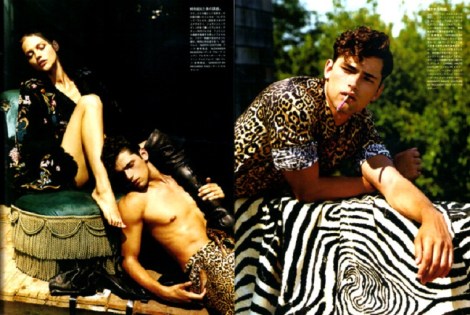

 Givenchy Animal Print Menswear Courtesy Givenchy
Givenchy Animal Print Menswear Courtesy Givenchy
 Animal Print Sarees by Satya Paul Courtesy Satya Paul
Animal Print Sarees by Satya Paul Courtesy Satya Paul
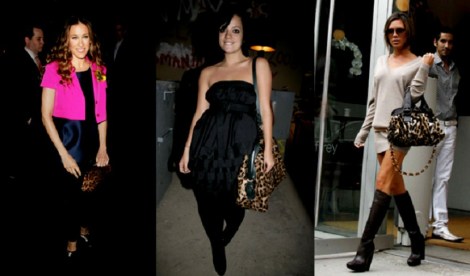
 Celebrities sporting animal print Courtesy Elle Magazine
Celebrities sporting animal print Courtesy Elle Magazine
Bling is another polarizing fashion statement, so prominent in Indian cultures and so opulently set out in Diwali in particular, with jewelry and silken embroidered palettes of men and women alike, glistening with symmetrical stones. The jewels and luster is paving into Halloween too, with sparkling vampire accessories, be it a choker, touches on the ring or gazeful necklace, or tinkling accents to many classic costumes, perhaps as a bridge to the snow-lit December.
Bling encrusted menswear by Benzer Courtesy Benzer
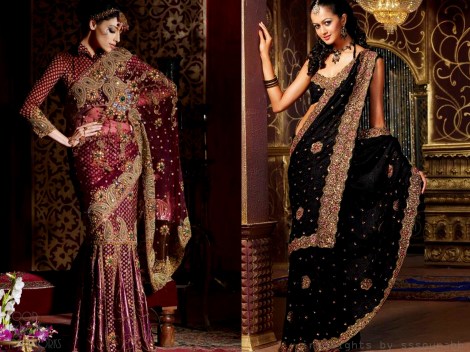 Heavily embellished sarees by Sabhyasachi Courtesy Sabhyasachi
Heavily embellished sarees by Sabhyasachi Courtesy Sabhyasachi
Bling accessories as pharaohs and vampires Courtesy Spirit
 Finally, a sugar collision is inevitable. Cities are flooded with recipes, gooey concoctions of all things melted, dunked, and soaked in chocolate, reformed ghoulishly yet tastefully into perfect treats for transitioning from autumn to winter. My favorite is the caramel candy apple – a succulent sour green forbidden fruit dunked in a river of chocolate and studded with crunchy edibles galore (pecans anyone?).
Finally, a sugar collision is inevitable. Cities are flooded with recipes, gooey concoctions of all things melted, dunked, and soaked in chocolate, reformed ghoulishly yet tastefully into perfect treats for transitioning from autumn to winter. My favorite is the caramel candy apple – a succulent sour green forbidden fruit dunked in a river of chocolate and studded with crunchy edibles galore (pecans anyone?).
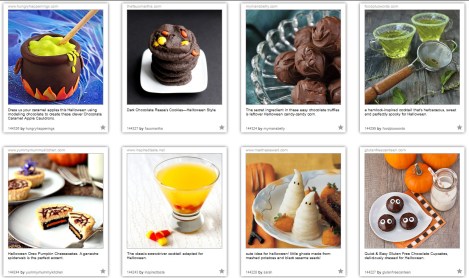 Succulent Halloween Themed Recipes! Courtesy Tastespotting
Succulent Halloween Themed Recipes! Courtesy Tastespotting
Similarly, sweetmakers (halwais) in India and worldwide start setting up stores and streets full of mithaai, the fusion of nuts, flour and sugar to create endless combinations and colors of sweets – warm, cold, soft, tough, chewy, bite-able, and of infinite colors and textures. For picking favorites, I am torn between cashew barfi’s semi-sweet and crumbly texture and the opulent ladoo’s delectable granular chewiness, especially when infused with almonds and other nuts.
Two months. Dual holidays. Two festivals. Many tastes. Several attires.
Welcome to my life of cultural fusion.
Eat.
Wear.
Live.

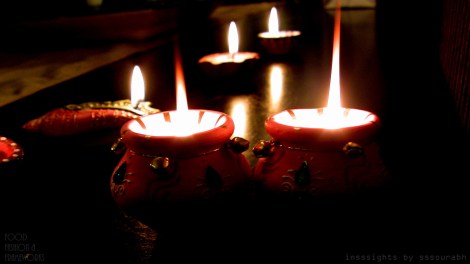
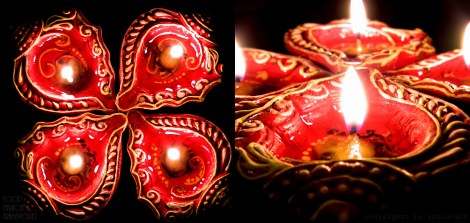


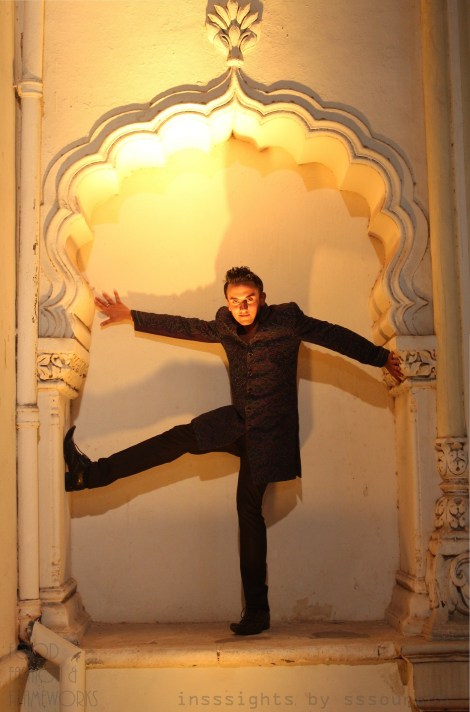





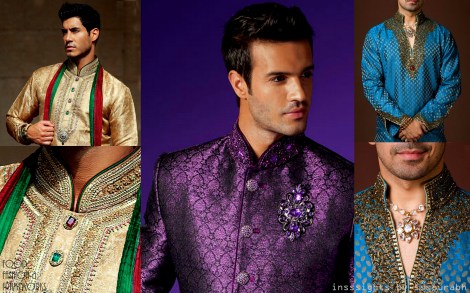

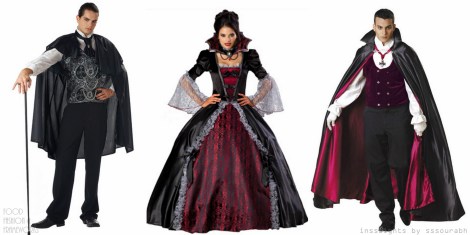




Pingback: A Tasty Tale of Adultery « Food, Fashion & Frameworks·
Pingback: Cravings 2012: The Fashion Horoscope « Food, Fashion & Frameworks·
Pingback: Sunrise on a Succulent Sunday « Food, Fashion & Frameworks·
Pingback: Chasing Red Ice Pops « Food, Fashion & Frameworks·
Pingback: Craftsmen, Wolves, Artists and Sugar Addicts « Food, Fashion & Frameworks·
Pingback: Women of Fashion: Trends in Transit at the Tents of NYFW |·
Pingback: Bags, Shoes or Jewelry? Trends in Transit at the tents of NYFW |·
Pingback: From Vienna to Prague: Back in Time to Eat with Mozart |·
Pingback: A Glossary of Indian Sweets… with Candlelight, Opulence and Celebration |·
Pingback: Whimsical Chocolate Biology |·
Pingback: Give Me Love via Polka Dots |·
Pingback: 15 Masques of Sinful Desserts, Chez Dominique Ansel: Part 1 | 3FS: Food Fashion Frameworks·
Pingback: A Golden Tribute to the World, from Amritsar | 3FS: Food Fashion Frameworks·
Pingback: Personal Menswear Picks in Red, White and Blue | 3FS: Food Fashion Frameworks·
Pingback: 3 Lessons From Entrepreneurs (and their Fears) at TechWeek NYC – Fig or out·